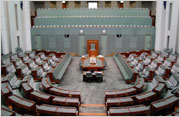Green, Research - Climate Change Doubles Western US Wildfires
Global warming caused by human activity isn't just a fact, it's measurable on more and more levels. Researchers now say that the wildfire season in the Western United States is longer and more destructive because of glonal warming.
"We're no longer waiting for human-caused climate change to leave its fingerprint on wildfire across the western US," said John Abatzoglou, associate professor of geography at the University of Idaho and lead author of the new study. "It's already here."
The researchers from University of Idaho and Columbia University in New York says human-caused global warming contributed an additional 16,000 square miles of burned forests from 1984 to 2015. That's 50 percent of the woodland areas that burned over the last three decades.
It's the first study of its kind to try to quantify how much human-caused climate change has increased wildfires in Western forests. The researchers had to consider the changes in the ways that fires are battled in the western US, plus natural climate variability and the increased human settlement.
Longer and hotter dry spells are causing Western forests to dry out and become more vulnerable to wildfires. Spring and summer temperatures have warmed by 2 to 2.5 degrees since 1950. Some of that is due to natural climate variations, but 55 percent of it was caused by global warming. The longer and hotter these summers go, the more dried out wood and brush they leave as fuel for wildfires.
Co-author of the study Park Williams of Columbia University's Lamont-Doherty Earth Observatory says western US states should take the knowledge from this study to help plan and budget resources during fire season. "This knowledge will allow us to make more educated fire and land management decisions," he said.
In August, Harvard researchers released a report saying that by 2050, wildfire seasons will be about three weeks longer, up to twice as smoky, and will burn a wider area in the western states.








 Create PDF
Create PDF Print
Print Email to friend
Email to friend